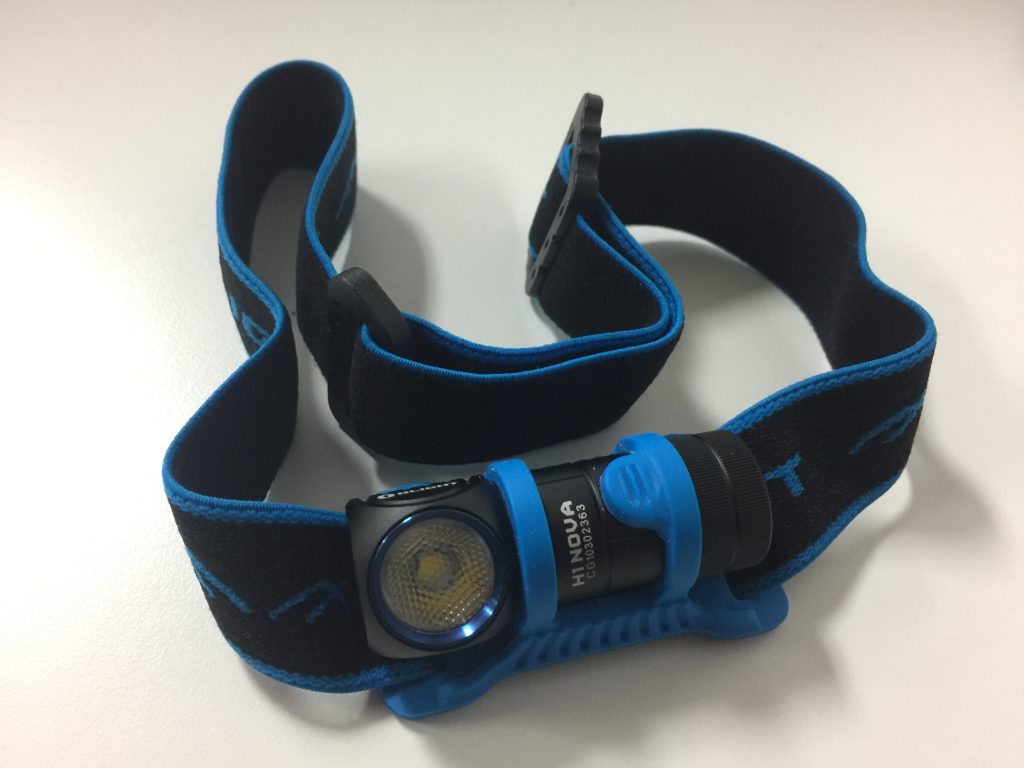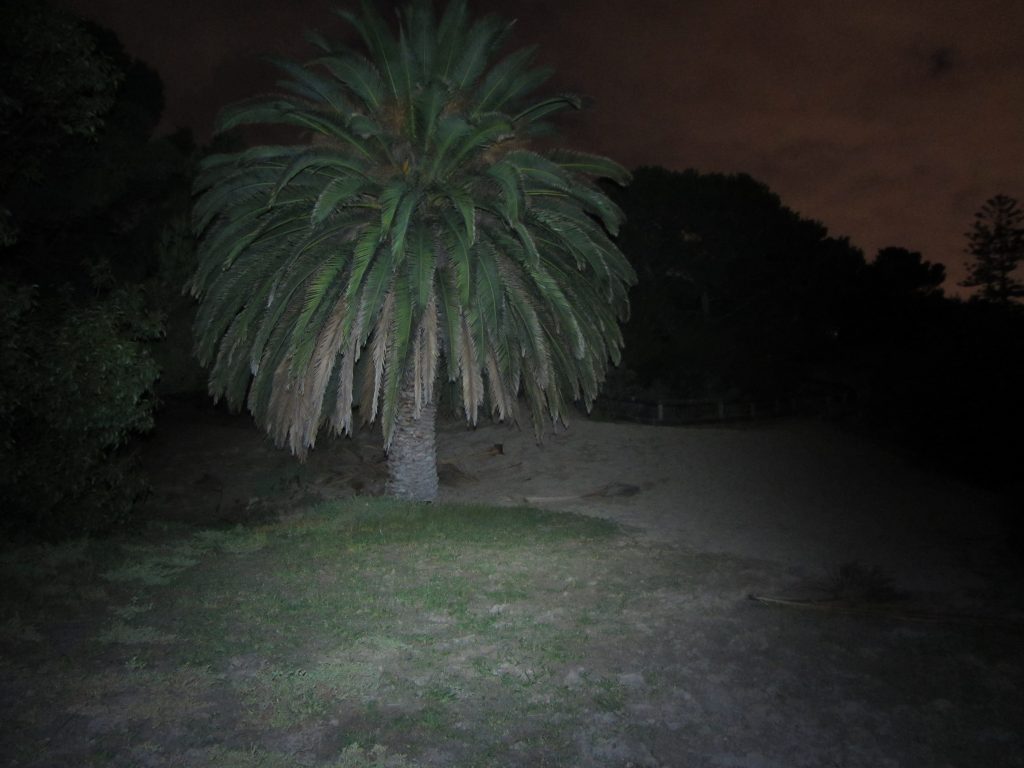As a runner that enjoys practicing my art during hours of less-than-ideal ambient lighting (read: stupid early o’clock), I have tested out a fair number of illumination methods for both safety and visibility. Because I’m also training for a 24 hour obstacle race (True Grit Enduro) I do have some pretty specific requirements of my equipment based on mandatory race kit and the performance required of the hardware.
In terms of just making it easier to run around in the dark nothing quite beats the performance of a headlamp. I have seen some designs of running lights that attach to hands, waist or even feet, but when you need to light up whatever is in the general direction of where your eyes are pointing (you know, the things that need the light in the first place) then the most logical choice is sticking a lamp to your head and pointing it forwards. This, and the fact that a ‘head lamp’ is mandatory equipment for most night-time ultra marathon events means that I’ll stick with messing around with head-mounted lights.
In the beginning I ran with a simple eBay LED light. I was naive and impressed by the lumen rating, the sheer number of LED’s and the flashy photos of smiling people running fast and safe. Little did I know that sheer lumen ratings and number of lights are quite deceptive when it comes to lighting. I quickly upgraded to a more well known brand – Black Diamond – specifically the Black Diamond Spot; This was quite a powerful light for it’s time and price range (2014, $89.95 AUD) rated at 130 lumens (subjective), but it was amazing. It ran on 3 x AAA batteries, but it only had an IPX4 rating – essentially meaning that it was resistant to the most minor of splashes with lukewarm water.


For Enduro I needed something a bit more robust, so I picked up the behemoth Black Diamond Icon. This monster was rated at IPX7 (tested up to 30 minutes in 1m submersion), but also weighed in at 320g when loaded with 4 AA batteries. Two years down the track, however, the Icon has ceased working – upon inspection of the innards it looks like the IPX7 rating was truly tested by the conditions that I ran it through, and many of the surface-mount components have succumb to water damage and corrosion (I had never submerged the lamp more than 1m, it only ever got wet for brief moments dipping under water-obstacles).
2017 saw me entering the market for new headlamp when I was introduced to the Olight range of products. To be completely honest, as an athlete I was not familiar with the brand; Usually I would be looking to names like Black Diamond, Petzl, Fenix, or Led Lenser, but this was because I had previously only been looking to the products specifically marketed to runners needing illumination. Olight has built itself a reputation for high quality and durable lighting for tactical uses – Law enforcement, government agencies, and the military.
The Olight H1 Nova that I had my hands on seemed to be the result of an opposite approach to the market; Rather than filling the market for runners needing lights, this was a tactical light that would be suitable for running.



Firstly the specs:
- International Protection Marking: IPX8
- Brightness Outputs:
- Turbo Boost – 500 Lumens → 180 Lumens – 3 Minutes → 2 Hours 50 Min.
- High – 180 Lumens – 3 Hours
- Medium – 60 Lumens – 8 Hours 30 Min.
- Low – 15 Lumens – 42 Hours
- Ultralow – 2 Lumens – 15 Days (360 Hours)
- Weight: 49.5g (66.5g with CR123A battery)

The first thing that you notice when wearing the H1 Nova is that it is almost 5 times lighter than the Black Diamond Icon. You can obviously see the initial advantage to this when running a 24 hour race with around 12 hours in darkness. The comfort level is extreme, even the strap mount for the light itself is made of a soft-yet-durable rubber compound so it doesn’t press against your forehead and leave a stamp. Moving from a 320g unit to a 66g unit actually does make you feel like you are wearing nothing. One other thing to note is that because it is so light there is no need for a strap that extends across the top of your head like on the Icon and other heavy lighting units. For running this is because the sheer weight of the light and batteries will force it to move around if it were simply a headband strap. A top strap is absolutely fine if you are always standing upright, but one of the issues that a few people had at the True Grit Enduro race was that when they were inverted their lamps would fall off into the water below the traverse rope (pictured below). Needless to say, there is absolutely no issue with the Olight H1 Nova coming loose and falling off your head at any angle, unless you don’t have the strap done up securely.

The next thing I made sure to research was the durability of the Olight H1 Nova. It’s IPX8 rating is a digit higher than the IPX7 of the Black Diamond Icon, but what does this mean? Generally speaking it means that the H1 Nova is rated to withstand a higher level of “waterproofing” as the Icon. The Icon’s IPX7 is rated to withstand 30 minutes submerged up to 1m depth (the lowest point of the unit is 1000mm under the water surface), and the Olight H1 Nova IPX8 is tested under greater stresses – funnily enough for IPX8 there is no consensus on the specifics, but to meet the rating it must be greater than 30 minutes at deeper than 1m (usually between 1 and 3 meters). The Olight H1 Nova is also made from a hard-anodised aluminium body as opposed to the plastic housing of the Icon.

The most important part of testing is obviously how it produces light, and for this a picture says a thousand words: Here’s some visuals of what I found to demonstrate the type and strength of the beam produced by the Olight H1Nova (Black Diamond Spot used for reference)







The main takeaways from the images above are the differences in the types of beams presented. I have found that Black Diamond lights tend to have a very concentrated central beam with a quick falloff in intensity, but the beams “throw” a lot farther than the H1 Nova light. This is good for purposes that require long distance viewing or search-lighting, but one thing that I did notice in the early hours of the morning was that the piercing light became blinding when the condensation from your breath entered the beam. The Olight H1 Nova has a much more diffuse beam, providing a wider and more even spread. The difference I found in practical use was that the wider H1 Nova beam felt a little less claustrophobic for night running purposes – there was a less distinct drop-off into the surrounding darkness, even though the beam did not penetrate as far as the Black Diamond beam. That being said though, when the Olight H1 Nova button was double tapped and the Turbo Boost mode turned on, you had a full 3 minutes of 500 lumen power until the unit dips to High mode to prevent overheating. At Turbo Boost it was one of the most powerful beams I’d ever seen for such a small and light device. After multiple hours of testing though, the tradeoff in weight and comfort came in the greatly diminished battery life. With a single CR123A cell it had more juice than 2 x AA batteries, so at the medium setting I was able to run all night (8 hours) before the battery saving mode kicked in – the H1 Nova would disable any setting too high so that you always had some light production available. At High setting with a dozen or so occasions of Turbo Boost I was able to get a good 3 hours out of a single CR123A cell before changing over to a fresh battery.
Other bits of note:
- H1 Nova in it’s headband mount can be set to any angle you want, as opposed to the Black Diamond style lamps that have set incremental angles.
- H1 Nova comes with an attachable pocket clip so that you can remove the torch from the headband and clip it to trouser/shirt pockets or hydration/back pack straps.
- H1 Nova also has a handy magnet on the battery cover end, so it can be attached to metal surfaces if it’s being used for things like under car work etc.


Quick run down on the Pro’s and Con’s of the Olight H1 Nova:
- PRO’S
- Weight
- Comfort
- Durability (IPX8)
- Brightness (High and Turbo modes)
- Versatility of mounting options (Headband, clip, magnet)
- Diffuse vs sharp beam – Great for running to see more details in close terrain
- CON’S
- Battery Life (tradeoff for EXTREMELY comfortable weight)
- Beam “throw” (66m, due to the wide diffuse nature of the beam)
In conclusion, the Olight H1 Nova is an extremely versatile and powerful head lamp for tactical and athletic use. If you need extended beam time without needing to change batteries then another model may be for you, but for the extremely comfortable weight and form factor, and versatile mounting options, the H1 is a great choice for a night-running Obstacle Course Racer.
You can pick up an Olight from Torches by Vern on Facebook here.